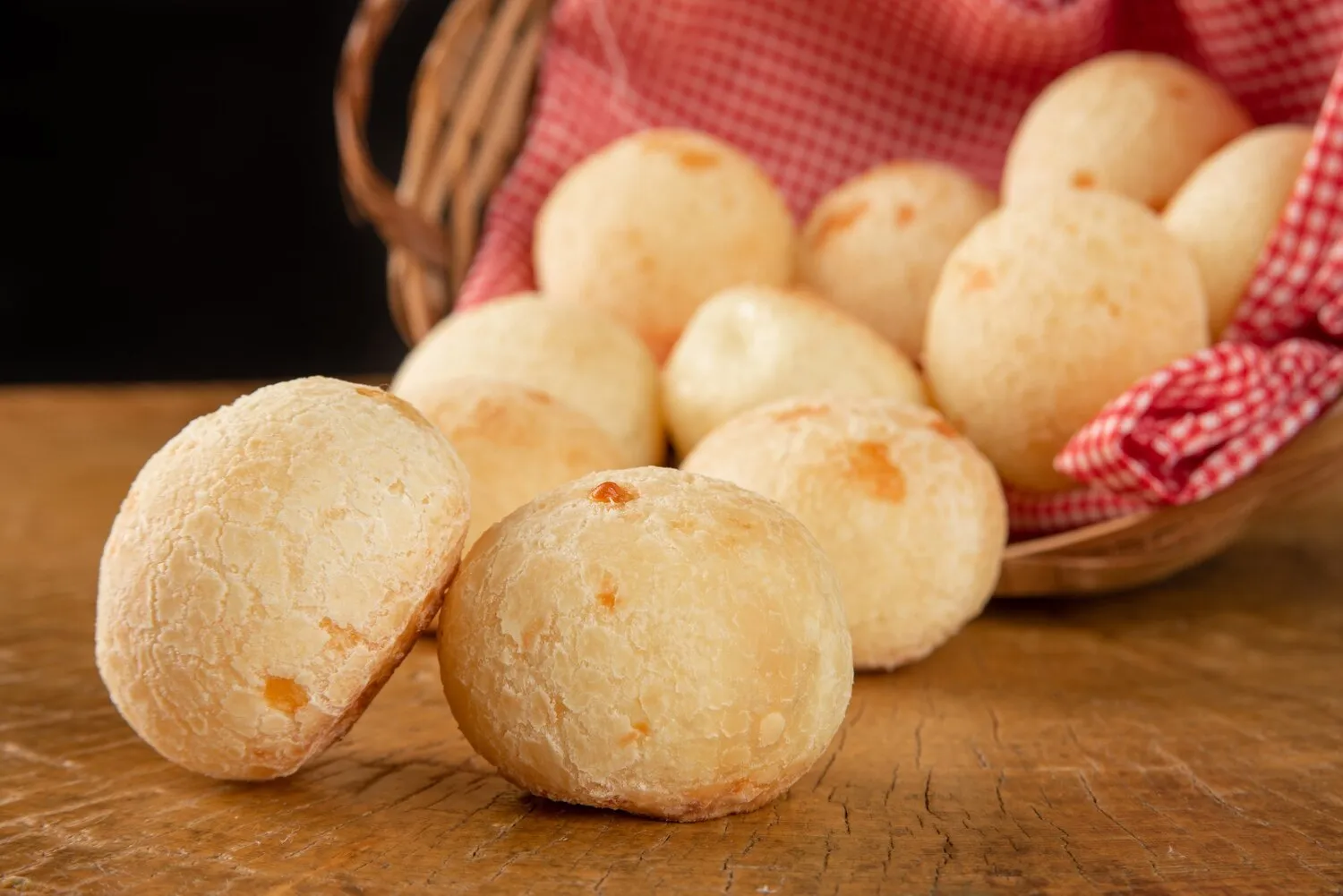
Pão de Queijo
A popular Brazilian cheese bread. It's commonly available at supermarkets across Brazil, including Girassol Supermercados.
Nutrition Facts
* The % Daily Value (DV) tells you how much a nutrient in a serving of food contributes to a daily diet. 2,000 calories a day is used for general nutrition advice.
Girassol Supermercados - Morrinhos
The exact origins of Pão de Queijo are somewhat debated, but it is believed to have originated in the state of Minas Gerais, Brazil, during the 18th century. The scarcity of wheat flour and the abundance of cassava starch (tapioca flour) and cheese led to the creation of this unique cheese bread. Enslaved Africans and farmers likely played a role in its development, utilizing readily available ingredients.
Pão de Queijo is deeply ingrained in Brazilian culture, particularly in Minas Gerais, where it's considered a staple food and a symbol of hospitality. It is commonly enjoyed for breakfast, as a snack throughout the day, or as an accompaniment to coffee.
Brazilian Breakfast Staple
Pão de Queijo is a common breakfast item, often served alongside coffee. Its small size makes it a convenient and satisfying way to start the day.
Social Gatherings and Hospitality
Offering Pão de Queijo to guests is a sign of hospitality in Brazil, especially in Minas Gerais. It is frequently served at social gatherings and celebrations.
Regional Variations
While the basic recipe remains similar, regional variations exist, with different types of cheese and proportions of ingredients being used depending on local preferences.
Ubiquitous Availability
Pão de Queijo is widely available throughout Brazil, from small bakeries and cafes to large supermarket chains like Girassol Supermercados. Frozen versions are also popular for home baking.
Pão de Queijo boasts a delightful combination of cheesy, tangy, and slightly chewy flavors, with a unique texture that sets it apart from other bread. The tapioca flour contributes to its airy interior and slightly crisp exterior.
The dominant flavor is undoubtedly cheesy, derived from the type of cheese used, traditionally 'queijo Minas' (Minas cheese), which can range from mild to slightly tangy. The tapioca flour, or 'polvilho azedo' (sour tapioca starch) and 'polvilho doce' (sweet tapioca starch), contribute a subtle tang and chewy texture. Milk and eggs add richness and moisture, while the oil provides a slight savory note. The overall flavor profile is savory and satisfying, making it a popular snack or breakfast item.
Tapioca Flour Blend
Using a combination of sour and sweet tapioca flour ('polvilho azedo' and 'polvilho doce') is crucial for the characteristic chewiness and tang. Adjusting the ratio can affect the final texture.
Cheese Selection
The type of cheese greatly influences the flavor. Minas cheese is traditional, but other cheeses like Parmesan, mozzarella, or provolone can be used to create different flavor profiles. Experiment with different cheese combinations!
Baking Temperature
Baking at a relatively high temperature is essential for achieving a crispy exterior and a light, airy interior. Preheat the oven thoroughly before baking.
Don't Overmix
Overmixing the dough can result in a dense Pão de Queijo. Mix only until the ingredients are just combined.
Explore additional Handy food dishes and restaurants
Explore Handy foodDiscover top dining spots and culinary experiences in Bombinhas.
Explore BombinhasLearn more about the food culture, restaurant scene, and culinary heritage of Brazil.
Explore Brazil